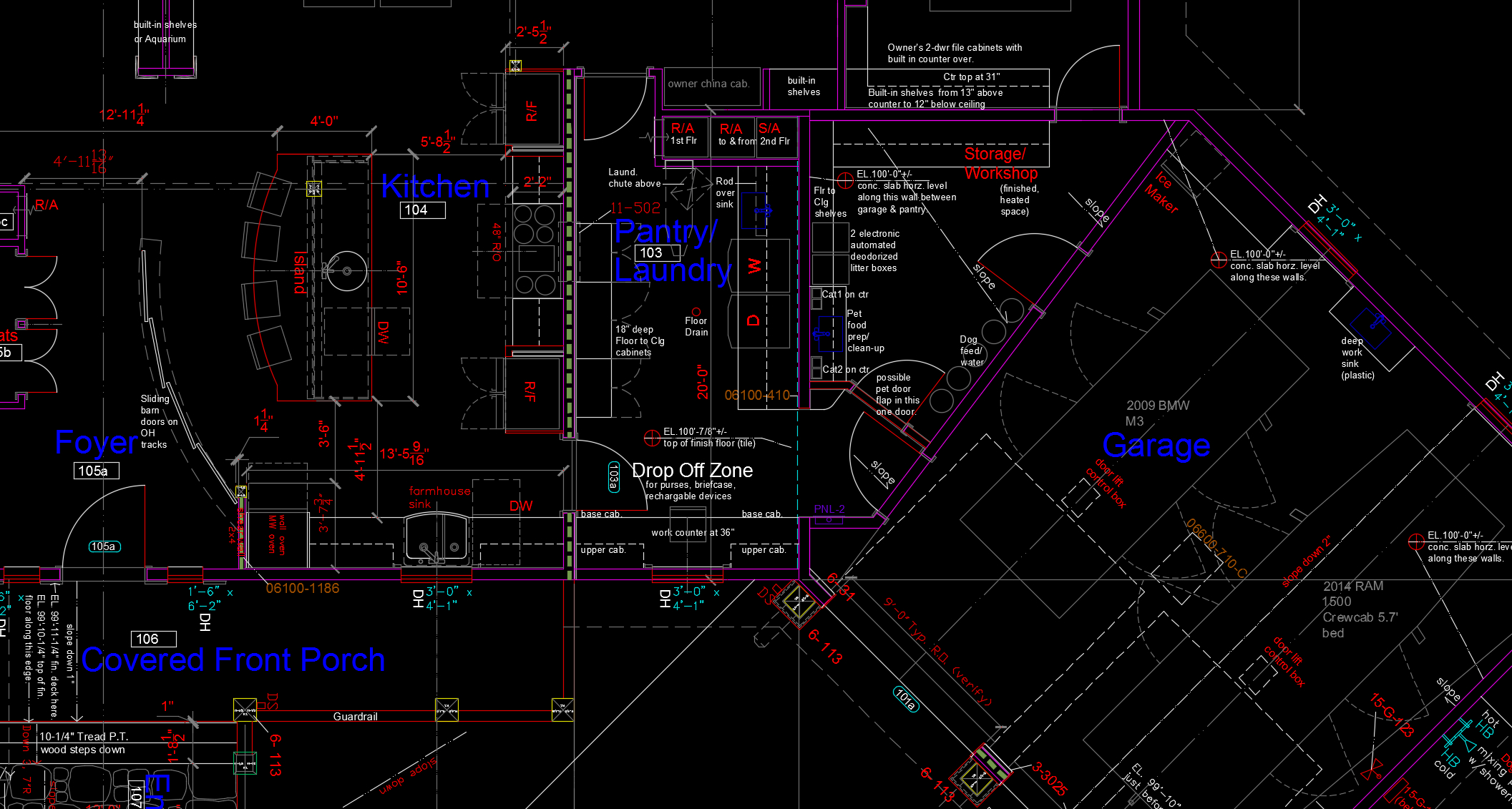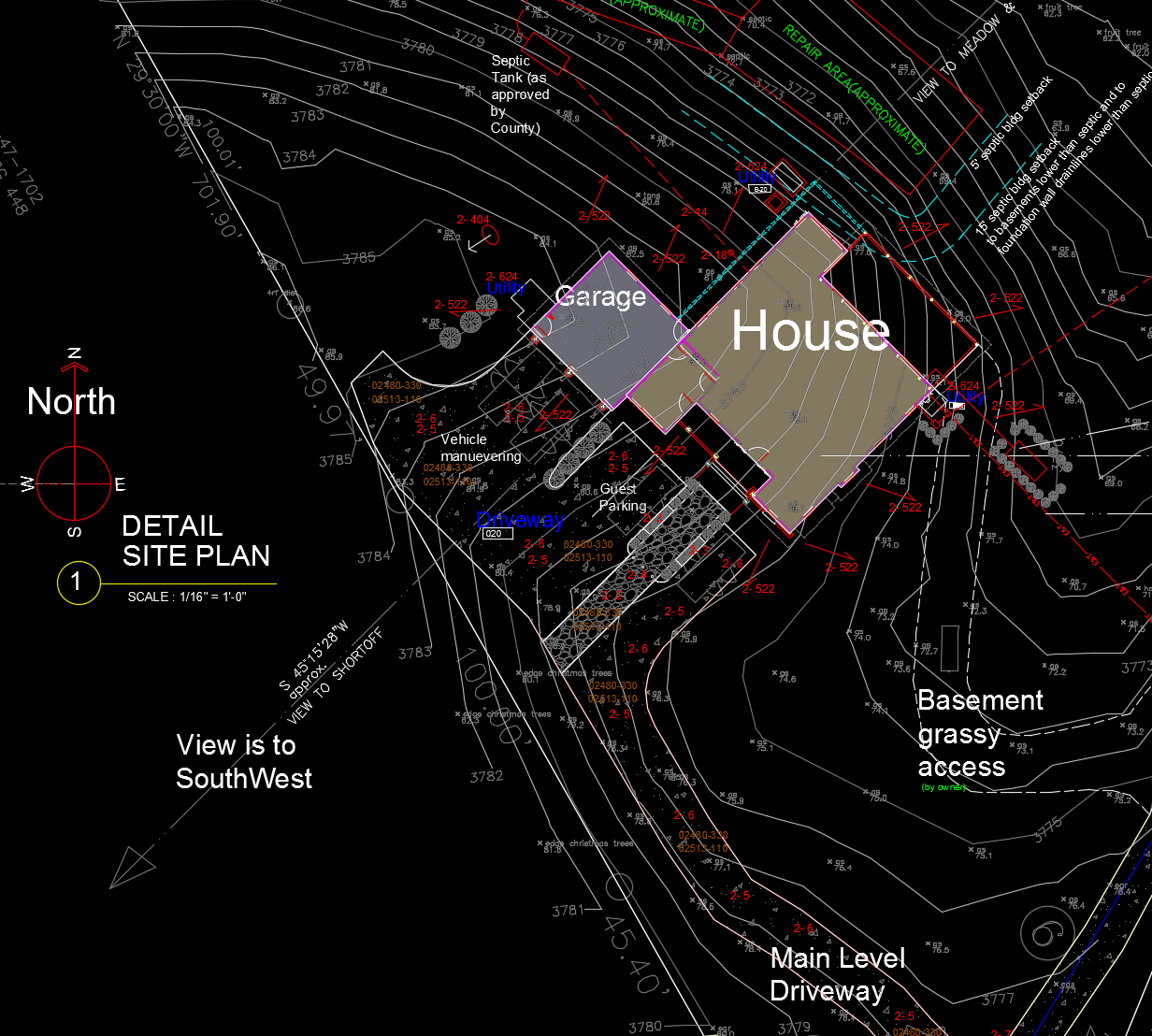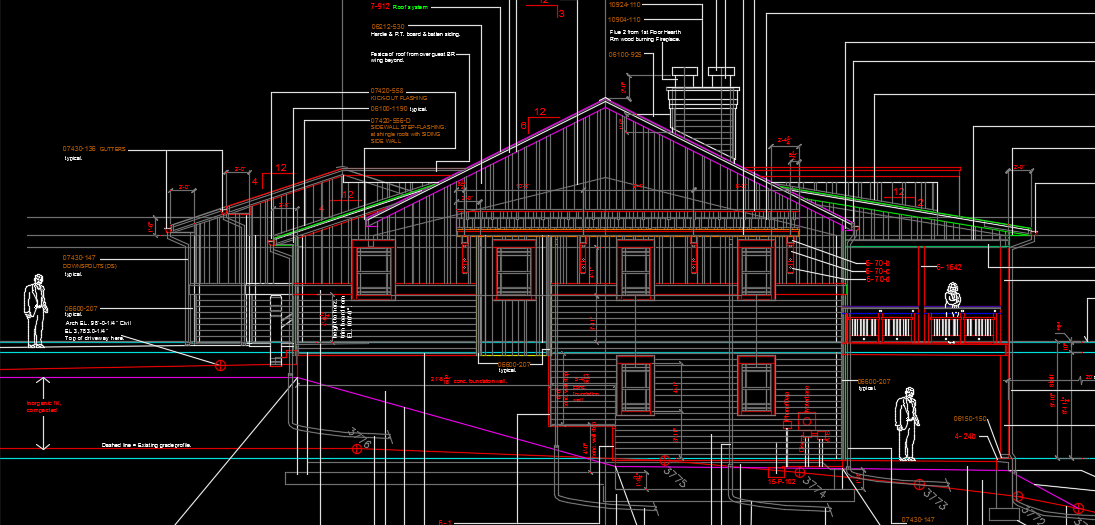CAD: Computer Aided house Design: what is that and why is it important for your upcoming house design?
You may have seen some Architects or others furiously scribbling away with pencils, magic markers or other media. While that may look artistic, it can ultimately result in time and effort spent without useful payback. What do we mean by that?

Every second spent developing an architectural design on CAD: Computer Aided Design is being used to evolve the project and advance it towards its final CD (Construction Document) completion. In other words: digital information is the most efficient method of developing a house design. Why: any documents prepared on paper are analog and they will ultimately be thrown away. There is no way to advance them inside a computer unless they began life there.
So: while colorful paper drawings may initially make a Client interested and feel that “artistic” efforts are being made on their project, the truth is: those paper documents are not nearly as efficient at advancing a project as drawings inside a computer: CAD: Computer Aided house Design.
Rand Soellner, ArCH, NCARB, Senior Staff Architect at HOME ARCHITECTS ® said: “I used to be the Senior Associate at a high-profile post-modern architectural firm in Orlando back in the 1980s. This was a top award-winning firm. One of my school projects that I designed there won an AIA Design Award of Excellence. However, this was just before the PC (Personal Computer) revolution. All of this firm’s projects were produced by drawing with plastic lead on frosted mylar (as were most Architects at that time). Changes were a pain. You had to erase and then redraw on the same sheet. And while mylar was more dimensionally stable than paper, dimensions were accomplished by drawing to scale using measuring sticks (called scales). When angles and curves were involved, it was easy to make a mistake dimensioning a project. I remember performing mathematical calculations to check my dimensions to make sure they were correct. Not everyone did that. I remember another firm in Central Florida that made some dimensional errors on their documents for a large County project. During construction, this was discovered. That firm had huge liability and the County had a mess on their hands.
The firm I was with thanked God that wasn’t us. However, that was about the time that CAD (Computer Aided Drafting (or Design)) became available. One of the main advantages of CAD is associative dimensioning. This means: that the dimensions are figured out by the computer software, not a human being. This makes the dimensions accurate. That one feature alone made Architects by the hundreds of thousands rush to join the computer age.

Also, at the end of each project phase: Schematic Design, Design Development, we threw away the entire set of drawings. What a waste. Then we started with a fresh set of mylars, creating the next phase of work. That always bothered me. Such an unproductive workflow.”
Soellner said that another advantage of CAD is that everything is drawn 1 : 1. This means everything is drawn full size, not scaled. And: you can zoom in and out of what you are drawing on a computer using CAD, to allow you to see in great detail how materials and features align and coordinate together. Also: you can arrange the various drawing sections to be shown at any scale you wish: small or large and in as much detail as the Architect desires.
Rand hastens to add: “Some people think that the computer designs and draws everything by itself, after you simply push a button. That’s not how it works. It’s not that easy. A highly experienced licensed Architect must be the person operating the computer. Every line and even every dimension still has to be drawn or at least called forth to appear in exactly the right place. It’s just another way to draw. You essentially make all the same hand movements using a mouse that you would using a pencil, but there are many advantages and more accurate drawing techniques with the computer. And changes are easier on a computer than on paper.”

Soellner said he’s not so sure that drawing on computer takes any less time than drawing by hand, however, he said that it makes 100% usage of everything that is drawn (by computer). “You don’t ever throw drawings away on computer,” said Soellner, “you are constantly advancing and refining the drawings, adding detail, adjusting relationships to provide the Client the design they want with the documentation they need to properly build it.”
“And,” Soellner adds, “The level of precision with a CAD drawing is beyond anything in the history of the planet, in terms of accurate architectural drawings. It is amazing that anything prior to about 1984 was able to be built with any measure of accuracy, because that’s about when Computer Aided Drafting (and/or Design) came about.”
Soellner also said that the “Design” label of CAD (Computer Aided Design) is misleading. “The computer doesn’t design anything. The Architect still must design everything in the project. The method used is through use of a computer, hence “Computer Aided.” But the computer doesn’t make any decisions, doesn’t make any suggestions and certainly doesn’t draw anything that the Architect doesn’t create by moving his/her mouse. So Clients shouldn’t think that using a computer means that things are simpler for an Architect. Quite the opposite: it is much more technical. But in the end, the design is advanced more logically and with less wasted effort (as on paper) and the end result is much more accurate.”
Soellner’s company uses the world’s most popular and reliable CAD software: AutoDesk AutoCAD2016LT.
During the last decade or so, BIM (Building Information Modeling) has advanced computerized drawing to another level, now adding the “Z” coordinate for the 3rd dimension. But that’s a subject for another online article in the future. And even with 3D drawing, there will always be a need for detailed 2D drafting chores.
tags: CAD: Computer Aided house Design, Cashiers, Lake Toxaway, Highlands, Hendersonville, Aspen, Sevierville, Knoxville, Atlanta, Telluride, Lake Tahoe
